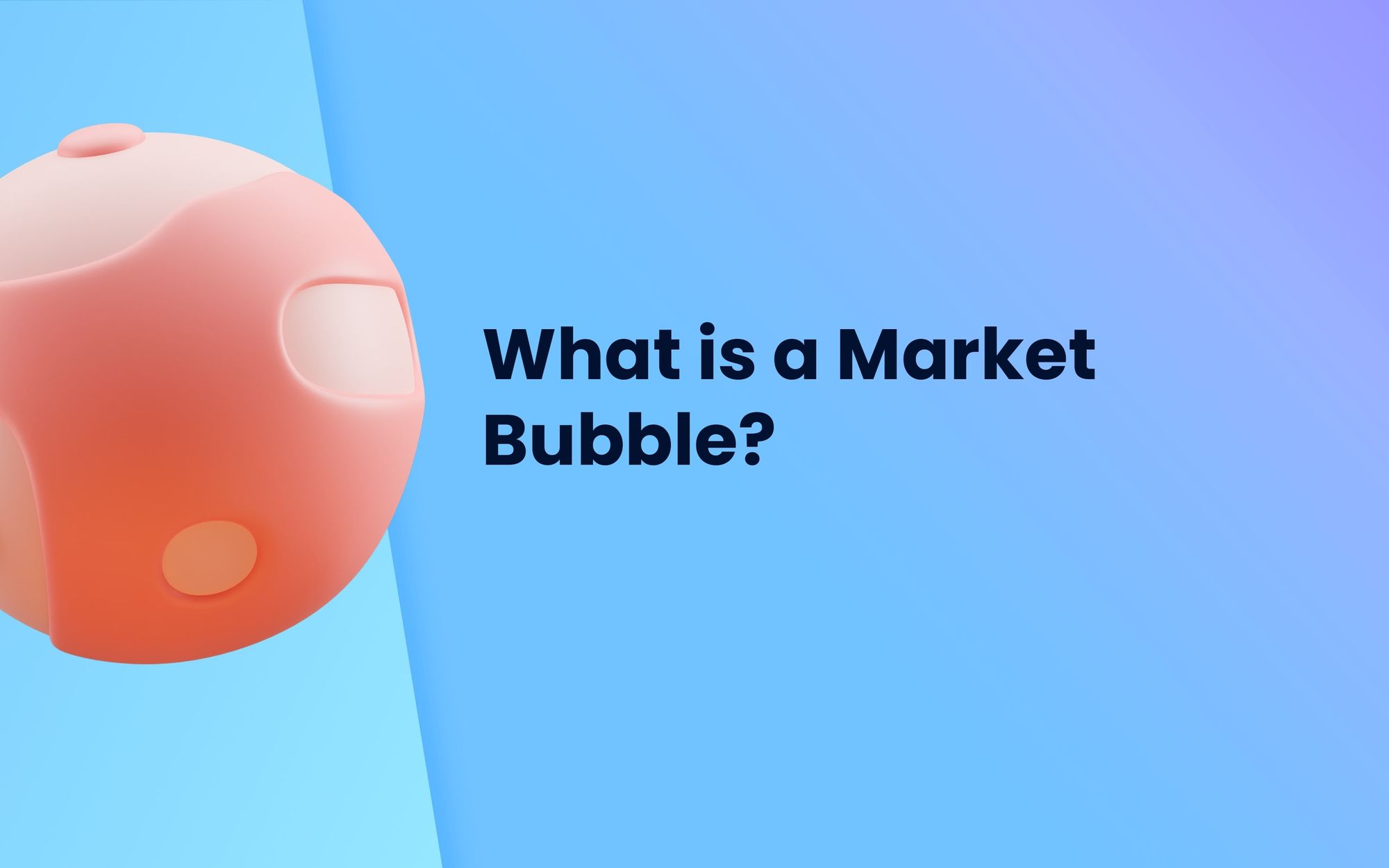What is a Market Bubble? | Pints
When you think of a stock market bubble, you might think of the dot-com bubble in the 1990s to 2000s. But what is a market bubble, exactly?

A market bubble is a phenomenon that is characterised by a fast, large climb in the market price of one or many assets. This rapid growth, though, is usually relatively short-lived, and just like the bursting of a bubble, market bubbles also crack open, pulling down the markets.
A sharp, fast increase in asset prices - This is usually the first sign that a bubble might be forming. It's not always easy to spot though, since markets naturally experience periods of growth. What you want to look for is an unexplained or out-of-the-ordinary jump in prices. Typically, a market bubble will follow a similar trajectory:
- Prices continue to rise even as concerns about the possibility of a bubble grow - As more and more people join, it pushes the price even higher.
- Eventually, prices reach a point where they're so high that people start selling. This is when the bubble finally pops.
How do you identify a market bubble?
There's no surefire way to spot a market bubble while they are forming. They form because of a combination of factors like euphoria driven by news cycles, emotions - greed and FOMO, and even loose monetary policies that lead to an oversupply of money. When you are in the bubble, you may be oblivious to the madness or may choose to ignore the warning signs. However, here are a few things you can look out for:
- Unsustainable price increases: this is the most obvious sign. If prices are increasing at an unprecedented rate, it might be indicative of a bubble.
- Lack of fundamentals: all assets have a fundamental value attached to it. If the market prices are way off from their fundamentals, you should see it as a warning sign.
How do market bubbles form?
Bubbles form when there is too much money chasing too few assets. This can be caused by a number of things like quantitative easing (printing more money), low interest rates, lax lending standards, and over-leveraging. When such things happen, bubbles can form in any random part of the asset markets. Centuries ago, there was Tulip mania (yes, the flowers…), when prices of Tulips went up like crazy due to speculation and belief that they will never come down. But of course prices crashed. Look at stocks, real estate, commodities, crypto - all markets have their bubbles and bursts.
How do market bubbles cool down?
Bubbles generally don't cool down on their own. It is often the case that asset prices go up until they reach a point where it becomes irrational, and then a small event can trigger a sell-off which causes prices to come crashing down. As with the current bursting of stock market & crypto bubble - war in Ukraine, supply chain issues, China's struggles with COVID, inflation (perhaps due to the QE during pandemic), gas prices etc - some or all of these have contributed to the current burst.
Where do we go from here?
It is difficult to say where we go from here. For the stock market, it seems that there is more downside than upside in the near term. For crypto, it is even more difficult to predict as prices are highly volatile and driven by speculative players - plus the lack of regulation is a hindrance to wider acceptability. But one thing is certain, for as long as there have been asset markets, there have been bubbles. This crazy time too, shall pass.
Read more here: Inflation - how does it work and what does it do to the markets?